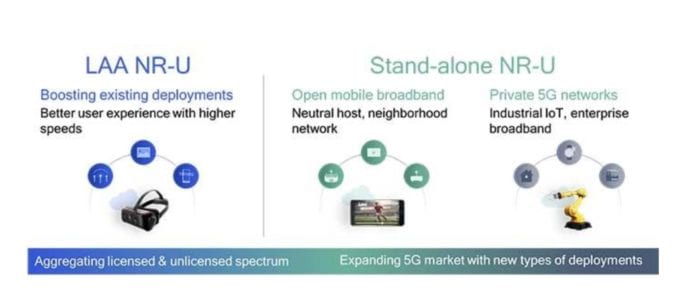AT&T and NAB against unlicensed use of 6 GHz; Qualcomm, Wi-Fi Alliance are for opening it up
In October last year the U.S. Federal Communications Commission passed a notice of proposed rulemaking that considers opening up the 6 GHz band to unlicensed use. And, as with any major spectrum decision, numerous industry stakeholders are making the case for and against any potential change during the ongoing comment period.
Specifically, the FCC is considering allowing unlicensed use of a 1200 megahertz between 5.925 GHz and 7.125 GHz. Wi-Fi and unlicensed cellular could tap the valuable mid-band spectrum, while incumbent users, particularly cable broadcasters who use the frequency to send out breaking news, sporting events and the like, and carriers who use it for point-to-point microwave backhaul.
According to FCC documents, the regulatory body envisions “proposed rules [that] will allow a valuable spectrum resource to be more intensively used to benefit consumers while allowing the existing licensed uses of the 6 GHz band to continue uninterrupted.”
When the NPRM was approved, FCC Chairman Ajit Pai, in addition to making a joke about the volume of Batman movies produced in the past three decades, said opening up the 6 GHz band for unlicensed us is “part of our aggressive and balanced spectrum strategy: pushing more licensed and unlicensed spectrum into the commercial marketplace and including a mix of low-band, mid-band, and high-band spectrum. And with the massive amount of wireless traffic that is off-loaded to Wi-Fi, opening up this wide swath of spectrum for unlicensed use could be a big boost to our nation’s 5G future.”
To that 5G point, there’s two sides of that coin. AT&T for instance says 5G densification will require more and varied transport options, thus the band should be left alone. Qualcomm sees 6 GHz as supporting 5G New Radio traffic in much the same way License Assisted Access aggregates licensed cellular with the unlicensed 5 GHz band to boost overall cellular capacity.
According to comments filed by AT&T, the carrier is “highly doubtful” licensed and unlicensed use of the band is possible. “These essential services operate, by necessity, with a miniscule margin for error and are therefore highly vulnerable to harmful interference. Those seeking to introduce potentially disruptive, unlicensed uses into the 6 GHz band (RLAN advocates) should therefore bear the burden of demonstrating, by clear and convincing evidence, that the proposed uses would cause no harmful interference.”
For what it’s worth, standards body 3GPP at a December plenary meeting in Italy approved making 5G NR-U in the 5 GHz and 6 GHz bands a word item slated for inclusion in Release 16. “Now that there’s a work item, it’s the phase where the specification starts and is put together,” Qualcomm VP of Technical Standards Lorenzo Casaccia said in an interview with RCR Wireless News at the time. “The next phase is to do the actual work, the detailed work, and we’ll do that in 2019. Eventually the technology will be included in the specification.”
Qualcomm further made the case for NR-U in detailed comments filed with the FCC on Feb. 15. Senior Vice President, Spectrum Strategy & Technology Policy Dean Brenner concluded that unlicensed use of 6 GHz “will enable improved broadband connectivity and highly useful industrial IoT and consumer applications, such as precision machine control, ultra-high-definition quality gaming, and virtual travel via AR/VR applications.”
In terms of co-existence with incumbent licensed use of the band, Brenner wrote: “Opening the band to unlicensed access does not require the imposition of any restrictions on the tens of thousands of point-to-point licensees in the 6 GHz band or other licensed incumbent users. Indeed, the framework described in the NPRM can be used to protect incumbent operations, and allow their continued use and expansion in the band. Part 15 unlicensed devices are a perfect fit as they are legally required to share spectrum with licensed services on a non-interference basis.”

